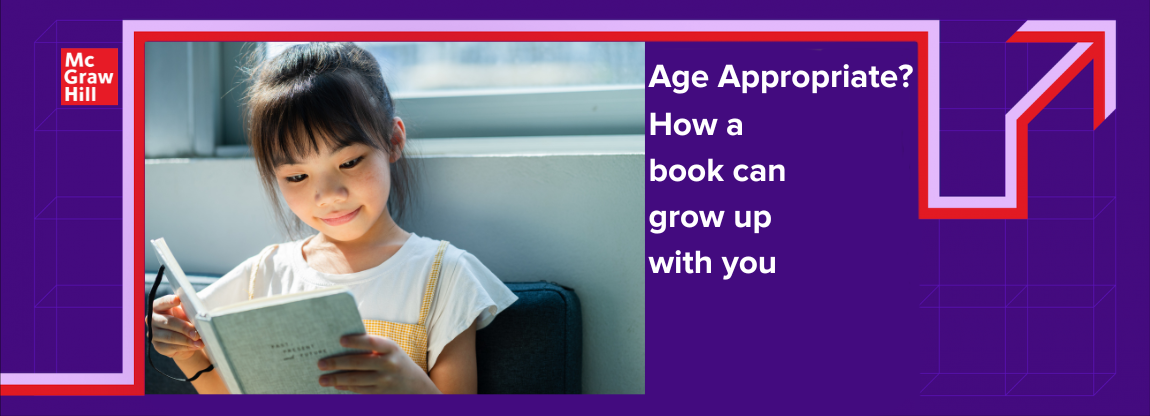Age Appropriate? How a book can grow up with you.
Most books marketed for children have a suggestion on the cover of suitable ages for reading them. We often hear comments like “It’s a bit old for him” or “She’s too young for that yet”. However, a good book met early can go on growing with you, as each re-reading brings new depth and understanding. I was given Kenneth Grahame’s The Wind in the Willows by my father for my fifth birthday. I loved the pictures, I followed the story with pleasure and excitement, and have reread it many times since, each time finding more. I know now how much nuance and social detail passed over me at five, as it obviously would – but a child takes what is accessible from a book at every stage, and can go back and pick up more later.
Like so many classics of previous ages, The Wind in the Willows has been pilloried in recent years: it has been accused of sexism (only two female characters, both very minor), privilegism (the propertied squirearchy has a right to defeat the masses), homoeroticism (the close bonds of affection between the all-male protagonists), sentimentality and other charges. Re-reading in adult life can find justification for these, but a child immersed in the story is, I would maintain, unlikely to absorb the concepts. The world of the Riverbank is a pastoral idyll, not a model for life.


Vocabulary
There were dozens of words I first met in Grahame’s narrative. Pageant, synopsis, loosestrife, benison, eaves, reckless… they don’t bring you grinding to a halt, or rushing for a dictionary; they can just be absorbed in a general way and niceties of meaning refined later (sometimes years later) as they turn up in other contexts. If a child wants to look a word up, it’s never been easier, and even if it’s understood wrongly, it doesn’t matter. To give an example from elsewhere, when I first read in Jane Eyre that on Helen’s grave ‘a grey marble tablet marks the spot, inscribed with her name, and the word “Resurgam,”’ I assumed ‘Resurgam’ was another word for ‘slattern’ – a final insult for the dead girl from Lowood school. Years later when I realised it was Latin for ‘I shall rise again’, another dimension was added, but my original understanding still lingered.
Ideas
There are three chapters often omitted from abridged editions of The Wind in the Willows; it was only when thinking about this piece of writing that I realised that none of them actually advances the main story at all. 'Dulce Domum' describes Mole’s return to the home he abandoned when he threw his life in with the Water Rat, 'The Piper at the Gates of Dawn' tells how the friends find their friend Otter’s lost child sleeping, protected by the god Pan, and 'Wayfarers'. All describe Ratty’s encounters with migrant animals and how he is nearly drawn into the life of a wanderer. These chapters contain some of the most lyrical writing in the book. It’s fine to skip them if that’s not what you like. It’s fine to come back to them later and pick up the feelings of nostalgia, of the mysteries of waking dreams, of wanderlust. Even if you don’t identify them.


References
There are little cultural references hidden in the text, perhaps as Grahame’s little nod to adults sharing the books with their children. The decoration of Mole’s garden is a dig at Edwardian fashion, (statues of “Garibaldi, and the infant Samuel, and Queen Victoria, and other heroes of modern Italy”), and Toad’s dinner party is described with details as “strictly on conventional lines”; the conventions of a society which Grahame is holding up for mockery.
It is easy for chapter titles to pass unnoticed. It was not until I was studying the Odyssey with a class of sixth-formers that I realised why Grahame gave the title The Return of Ulysses to the chapter in which Toad reclaims his ancestral home – a story-teller and braggart evicting a crowd of uninvited squatters, with only three allies to help him? It’s Odysseus’ (aka Ulysses’) return to Ithaca! Grahame clearly knew his classics, but didn’t labour the point. It’s just one of the little touches you can appreciate more even forty or fifty years after the first reading.


In short, The Wind in the Willows stills seems to offer me what it did when I first read it– a complete world which will always be there, unchanging and dependable. And its ‘one size’ is no more too small for me now than it was too big when I was five.
"Beyond the Wild Wood comes the Wide World," said the Rat. "And that's something that doesn't matter, either to you or me. I've never been there, and I'm never going, nor you either, if you've got any sense at all. Don't ever refer to it again, please.”
For further insights on how teachers can have a profound influence on children’s reading behaviour and attitudes to literature, why not read Rosemary Waugh, David Waugh’s new book Integrating Children's Literature in the Classroom: Insights for the Primary and Early Years Educator

